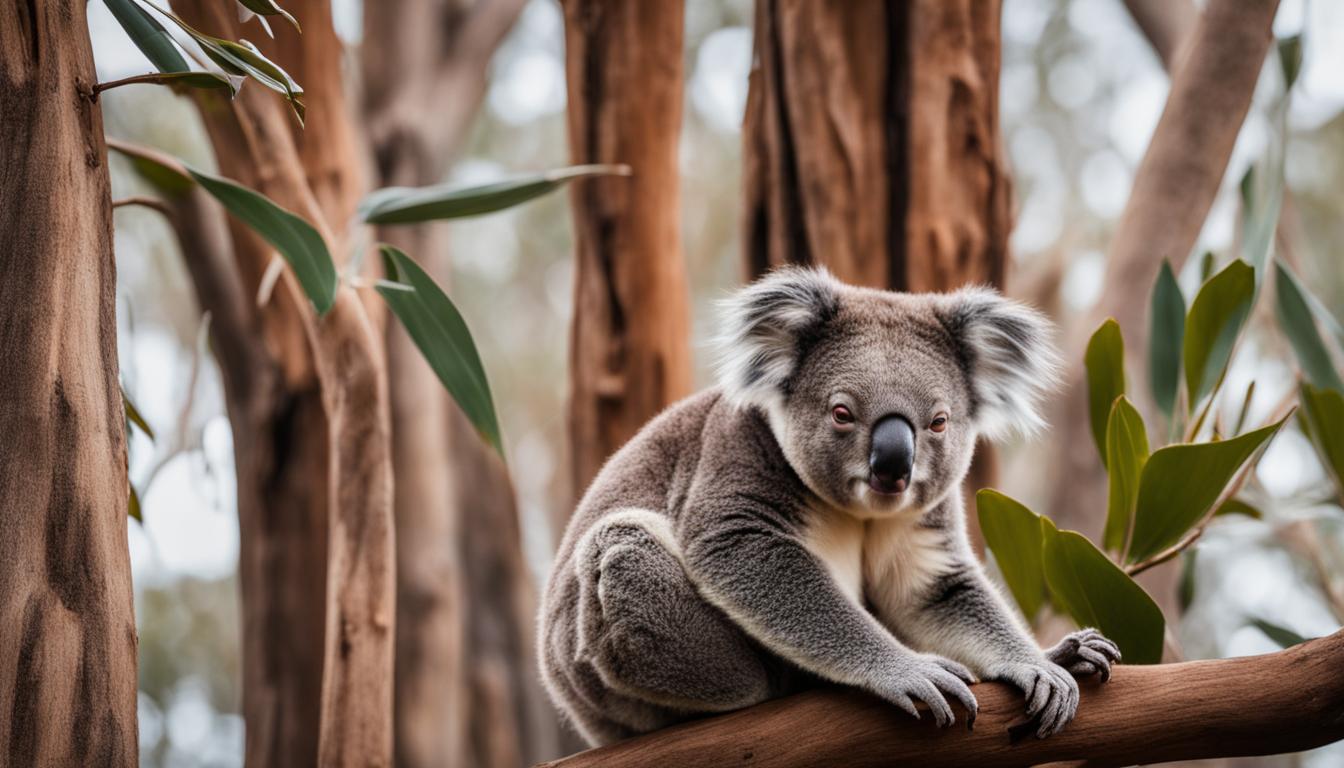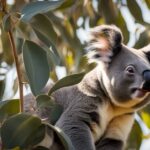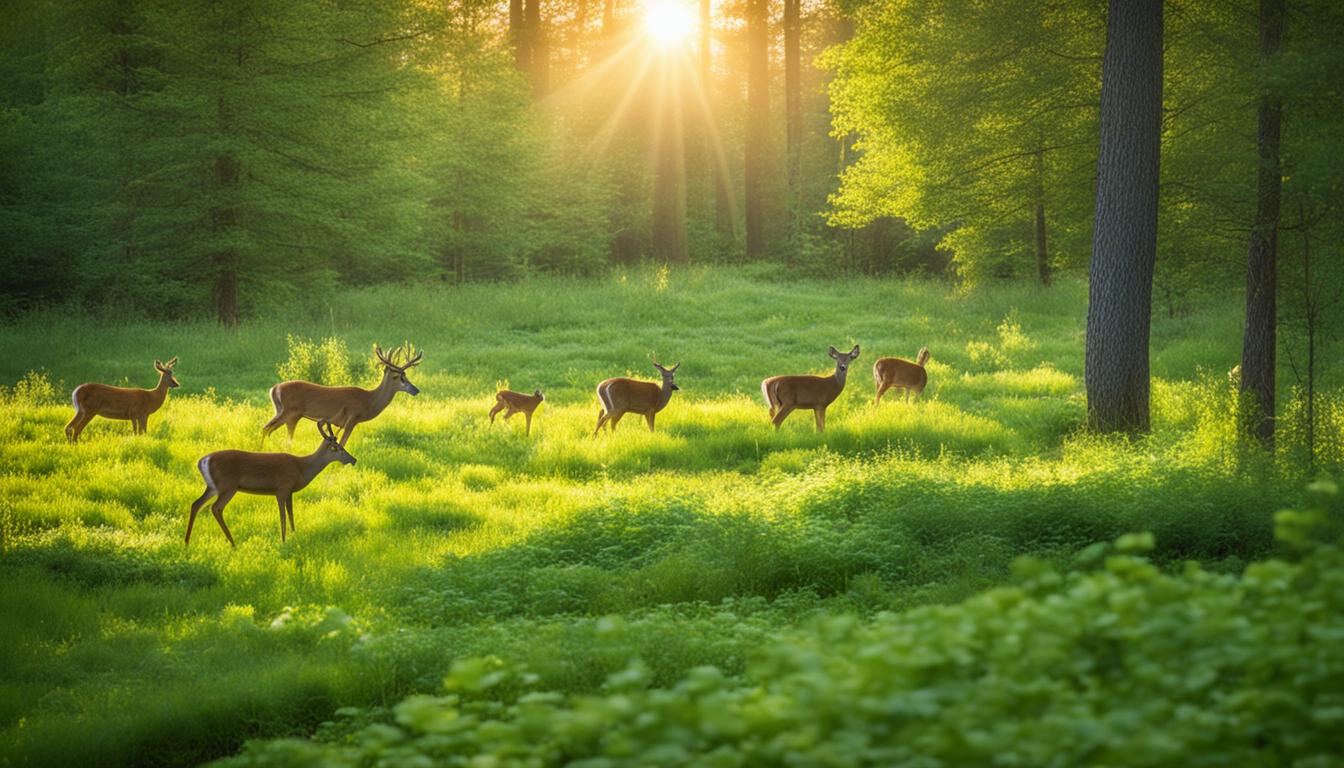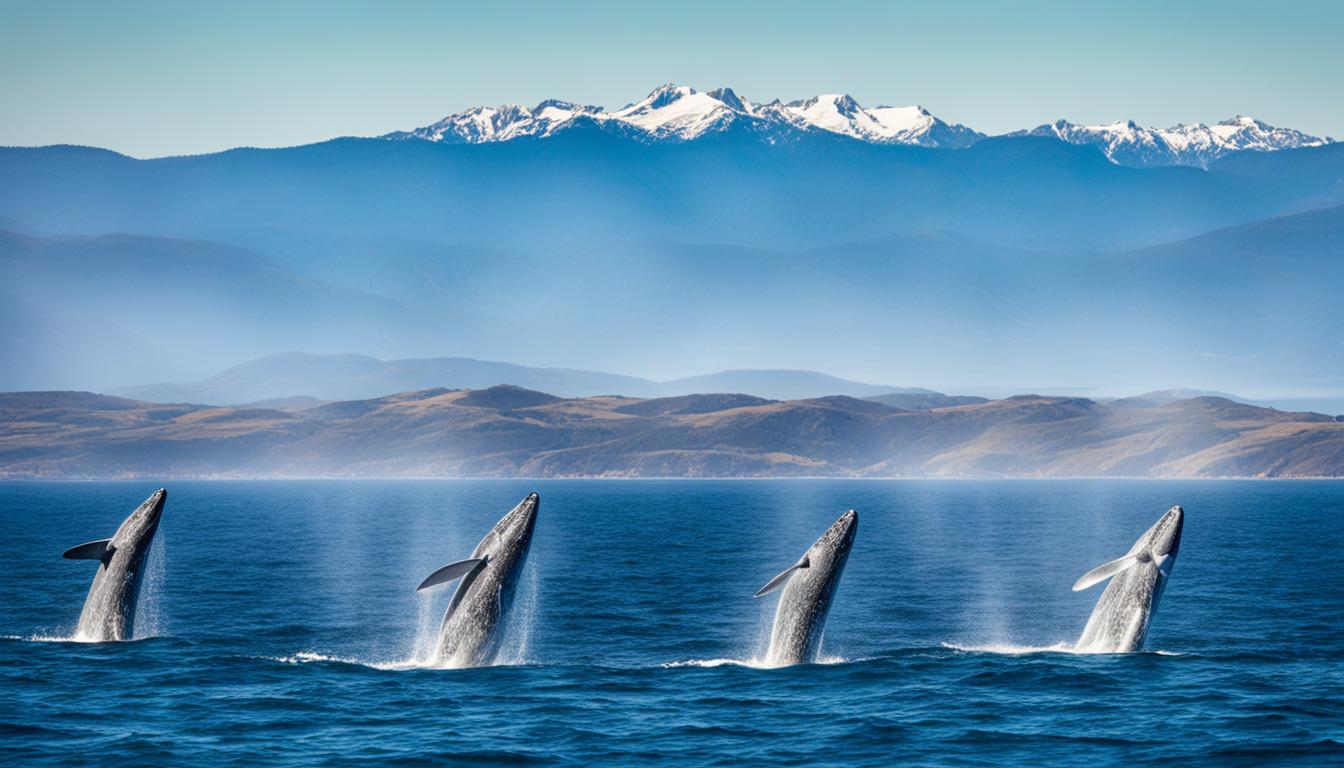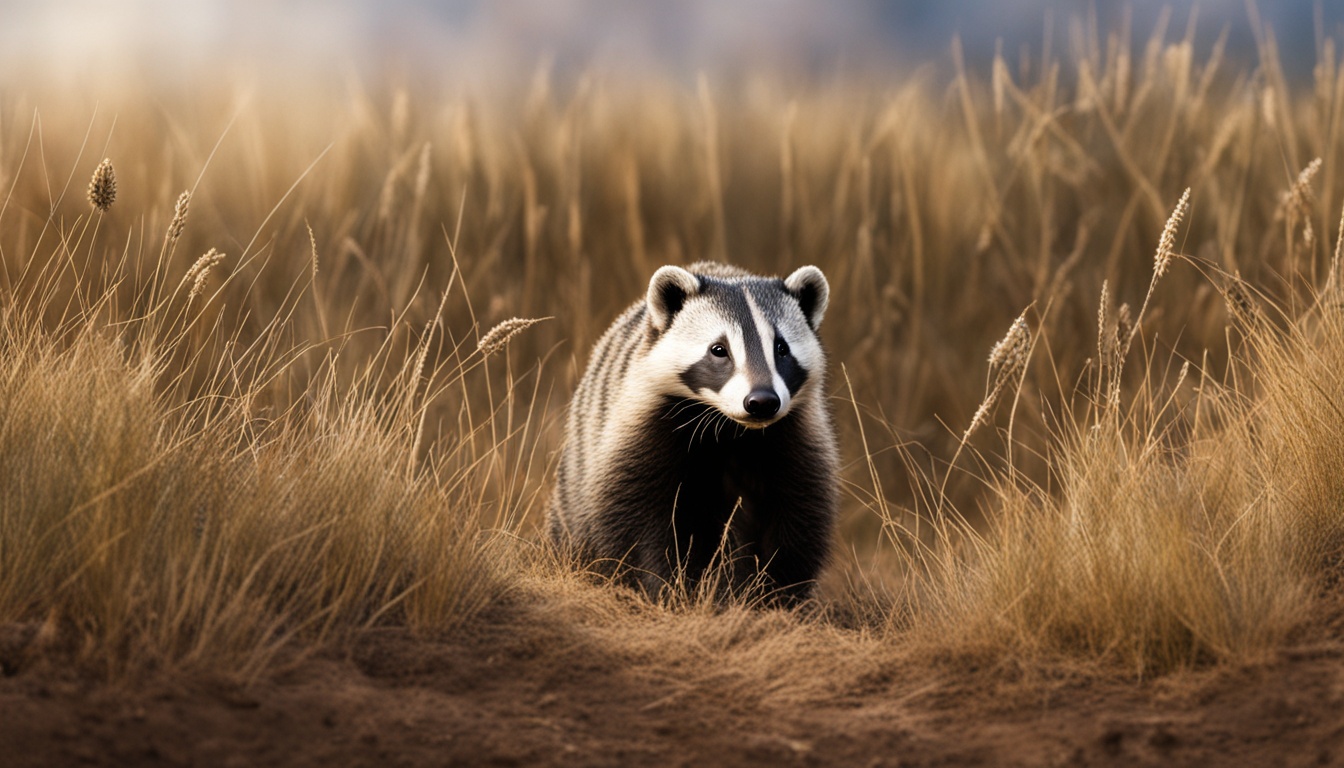Koalas in Australia are currently facing a concerning conservation status. Despite being listed as “vulnerable” under the Environmental Protection and Biodiversity Conservation Act in 2012, koalas in Victoria and South Australia were not covered by this legislation. In 2022, the koala was further listed as “endangered” under the EPBC Act, indicating a higher level of risk for their survival.
The Australian Koala Foundation estimates that there are less than 63,665 koalas left in the wild, possibly as few as 38,648. This decline is primarily due to habitat destruction, domestic dog attacks, bushfires, and road accidents. Meaningful legislation is crucial to protect koalas, as the current laws in place are not effectively or consistently protecting their habitat. Conservation efforts and public support are needed to ensure the survival of this iconic species.
The importance of protecting koala habitat
Habitat loss is one of the most significant threats to koalas. Clearing of native vegetation for agricultural and urban development has led to the fragmentation and destruction of their habitat. This loss of habitat not only affects koalas directly but also disrupts their natural behavior and ability to find suitable food and shelter.
Koalas primarily rely on eucalyptus trees for food and as a source of shelter. Protecting and preserving their habitat is essential for their survival. This includes implementing legislation that restricts habitat destruction and supports habitat restoration initiatives.
It is important to address the threats to koalas and prioritize their protection as a keystone species in the Australian ecosystem. By taking action to protect and restore their habitat, we can ensure the long-term survival of koalas and maintain the balance of our natural environment.
The importance of protecting koala habitat.
| Threats to Koalas | Koala Species Protection |
|---|---|
| Habitat loss due to clearing of native vegetation for agriculture and urban development. | Implementing legislation to restrict habitat destruction and support habitat restoration initiatives. |
| Disruption of koalas’ natural behavior and ability to find food and shelter. | Preserving and protecting eucalyptus trees, the primary food source and shelter for koalas. |
| Impact on the balance of the Australian ecosystem as koalas are a keystone species. | Addressing threats to koalas and prioritizing their protection through conservation efforts. |
Conservation Efforts for Koalas
The survival of koalas heavily relies on the dedicated efforts of various conservation organizations and initiatives. These organizations play a crucial role in raising public awareness, conducting research, and advocating for stronger protection measures to ensure the long-term survival of this iconic species. Here are some notable koala conservation organizations:
- Australian Koala Foundation (AKF): The AKF actively works towards introducing the Koala Protection Act, advocating for comprehensive legislative protection for koalas. They emphasize the importance of strong legislation, adequate resources, and enforcement to effectively protect koala habitat.
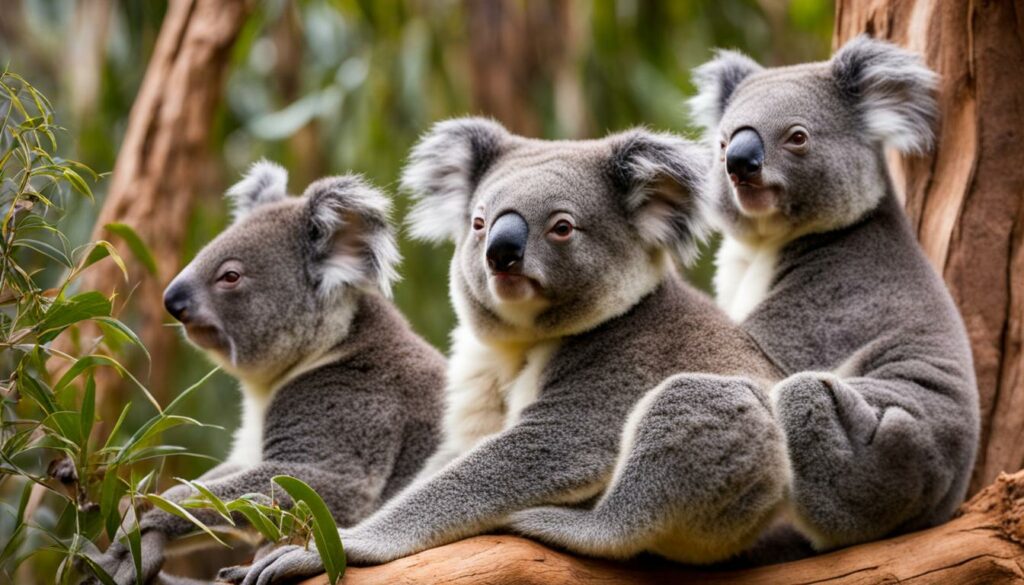
- WWF-Australia: WWF collaborates with government agencies, local communities, and other stakeholders to develop conservation strategies and undertake actions to protect koalas and their habitats. They aim to address the threats of habitat loss, climate change, and other challenges faced by koalas.
- International Fund for Animal Welfare (IFAW): IFAW focuses on the rescue and rehabilitation of injured or orphaned koalas, providing them with medical care and support. They also work to address the root causes of koala endangerment, such as habitat loss and degradation.
In addition to these organizations, numerous other initiatives and programs are dedicated to koala conservation. These programs focus on rehabilitating koalas, conducting research for better conservation strategies, and implementing community-based initiatives to protect koalas and their habitats. Together, these conservation efforts aim to safeguard the future of koalas and prevent further population decline.
The Impact of Climate Change and Wildfires on Koalas
The koala population is facing a severe decline due to the detrimental effects of climate change and devastating wildfires. These environmental factors have had a significant impact on the already endangered koalas, exacerbating the threats they face and pushing them closer to the brink of extinction.
Climate change has brought about increased temperatures and changes in vegetation patterns, making it more difficult for koalas to find suitable food sources. With their diet consisting primarily of eucalyptus leaves, any disruption to the availability of these trees can have devastating consequences for their survival. Rising temperatures and prolonged droughts further exacerbate the challenges faced by koalas, as they struggle to cope with heat stress and limited access to water.
According to research by the Australian Koala Foundation, the disastrous bushfires in 2019 and 2020 resulted in the loss of an estimated 60,000 koalas. These fires, intensified by climate change, destroyed vast areas of koala habitat, leaving them without food, shelter, and protection.
The impact of wildfires on koalas cannot be underestimated. These natural disasters not only destroy their homes but also lead to the death and displacement of thousands of koalas. The loss of habitat and increased fragmentation of their remaining habitats hampers their ability to move between trees and find suitable mates, further threatening their long-term survival.
| Impact of Climate Change and Wildfires on Koalas |
|---|
| Loss of habitat |
| Disruption of food sources |
| Increased heat stress and limited access to water |
| Death and displacement |
| Fragmentation of remaining habitats |
The combined impact of climate change and wildfires poses a grave threat to the survival of koalas. Urgent action is needed to address these issues, including implementing effective measures to combat climate change, investing in habitat restoration programs, and improving firefighting strategies to minimize the risk of wildfires in koala habitats.
Government Action and Legislation for Koala Conservation
The Australian government has recognized the urgent need for koala protection and has taken steps to address the conservation of these iconic animals. In 2022, koalas were declared as endangered in New South Wales, Queensland, and the Australian Capital Territory. This designation highlights the severity of the threats faced by koalas and the importance of immediate action.
The government has allocated significant funding for koala conservation efforts, demonstrating its commitment to protecting these treasured species. Millions of dollars have been dedicated to initiatives aimed at preserving koala habitats and supporting conservation programs. However, many conservation groups argue that more comprehensive legislation is needed to effectively address the root causes of koala population decline.
To further safeguard koalas, the Australian government is seeking states’ approval for a national recovery plan. This plan aims to coordinate and enhance conservation efforts across the country, ensuring a cohesive and strategic approach to koala conservation. By working together, government agencies, conservation organizations, and the public can make a significant impact on the long-term survival of koalas.
Stronger legislation, including the introduction of a Koala Protection Act, has been called for by conservation groups to better protect koalas and their habitats. Such legislation would provide a comprehensive framework for preserving koala populations and addressing the key threats they face, including deforestation, land-clearing, and the impacts of climate change. With continued public support and advocacy, there is hope for a future where koalas thrive and their conservation status is secure.
Government Action and Legislation for Koala Conservation Table
| Government Actions | Key Features |
|---|---|
| Declaration of koalas as endangered | Recognizing the urgent need for protection in New South Wales, Queensland, and the Australian Capital Territory. |
| Allocation of funding | Millions of dollars dedicated to koala conservation efforts, including habitat preservation and conservation programs. |
| Development of a national recovery plan | Coordinating conservation efforts nationwide and ensuring a strategic approach to koala conservation. |
| Call for stronger legislation | Conservation groups advocating for the introduction of a Koala Protection Act to better protect koalas and their habitats. |
“The survival of koalas depends on strong government action and legislation. We need comprehensive protection measures to address the threats they face and ensure their long-term survival. It is crucial that we work together to protect koalas and their habitats for future generations.” – Koala Conservation Advocate
Conclusion
The current conservation status of koalas is a cause for concern, with their populations in decline due to various threats and challenges. Protecting their habitat, implementing meaningful legislation, and addressing climate change and wildfires are crucial to their survival.
Conservation organizations and initiatives are working tirelessly to secure a better future for koalas, but individual action and public support are also vital. You can make a difference by getting involved, supporting conservation organizations, raising awareness, and advocating for stronger protection measures.
Together, we can protect koalas and ensure the long-term survival of this beloved and iconic species. Let’s take action now to preserve the natural habitat of koalas and create a sustainable future for them.
FAQ
What is the current conservation status of koala populations?
Koalas in Australia are currently listed as “endangered” under the Environmental Protection and Biodiversity Conservation Act. The Australian Koala Foundation estimates that there are less than 63,665 koalas left in the wild, possibly as few as 38,648.
What are the threats to koala habitat?
Habitat loss is one of the most significant threats to koalas. Clearing of native vegetation for agricultural and urban development has led to the fragmentation and destruction of their habitat.
What conservation efforts are being made for koalas?
Numerous organizations and initiatives, such as the Australian Koala Foundation and WWF-Australia, are dedicated to the conservation of koalas. They collaborate with government agencies, conduct research, raise public awareness, and lobby for policy changes to support koala conservation.
How do climate change and wildfires impact koalas?
Climate change and wildfires have significantly impacted koala populations. The increased frequency and intensity of wildfires have led to the loss of habitat and the death or displacement of thousands of koalas. Drought conditions and heatwaves, exacerbated by climate change, have also contributed to their decline.
What government action and legislation exist for koala conservation?
The Australian government has declared koalas as endangered in multiple states and allocated funding for koala conservation efforts. They are seeking approval for a national recovery plan. However, conservation groups argue that more needs to be done to protect koalas and their habitats.
How can I contribute to koala conservation?
You can contribute to koala conservation efforts by getting involved, supporting conservation organizations, raising awareness, and advocating for stronger protection measures. Together, we can make a difference and ensure the long-term survival of this beloved species.

